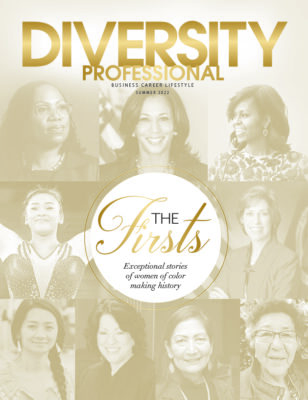Men Of Color: Leadership And The Impact Of Opportunity
What will it take to bring diversity to the leadership roles of America’s corporations?
It’s a fact. The majority of Fortune 500 CEOs are white. Data and other key factors suggest businesses and organizations still have a long way to go in increasing racial diversity at the C-suite level. There is one key area of diversity that is often overlooked—men of color in leadership positions. The diversity of men in leadership roles is not getting the attention that it should as we strive to increase the positive impact in the community and economy.
According to data from executive staffing firm Crist Kolder Associates, the majority of Fortune 500 CEOs are white despite an increase in minorities moving into CEO positions. The report stated the growth of CEOs of color occurred with Asian and Latino hires yet, Black CEOs still stand at five representatives. Men of color represent approximately 10% of the C-suite despite minorities becoming the largest representation of the population in the country. The gaps in leadership by men of color among the most visible and influential organizations are quite apparent.
Men of color who are CEOs of startups and small businesses can’t be overlooked. They represent a significant opportunity for growth and need for sustainability. There are small business and Inc. 5000 leaders of color that are making a great impact as CEOs and executives. Here are a few that are leading the way as men of color.
Stephen L. Hightower, CEO of Hightowers Petroleum Company, continues a family legacy of entrepreneurism. He runs a wholesale fuel distribution business with his family generating revenues just shy of half a billion dollars.
Clifford A. Bailey, CEO of TechSoft Systems, leads an IT support services firm specializing in network management and monitoring, cybersecurity and outsourcing. He is devoted to education, employment and economic development, and is active with organizations that share these same passions.
Frank Bonamie, Ongweoweh Corporation, the nation’s leading authority in pallet management and secondary packaging services. As the leader of one of the nation’s largest Native American companies, he was instrumental in encouraging Cornell University to educate Native Americans.
Sidd Ahmed, President and CEO of Vdart Inc., a global, emerging technology staffing solutions provider with expertise in SMAC (Social, Mobile, Analytics & Cloud), enterprise resource planning (Oracle Applications, SAP), business intelligence (Hyperion) and infrastructure services. He is known for his philanthropic efforts that have helped advance creative solutions to ensure equity and excellence in education for low-income students and students of color in the South.
Although their company revenues have not reached the billion dollar mark, they are making a major economic impact through their long-term success and by providing jobs and supporting community efforts for people of color. Many have used their business to further develop opportunities for men of color in executive roles.
Boards
Board positions have not provided the most impactful results for people of color, let alone men of color. According to the Missing Pieces Report, the number of total board seats in the Fortune 500 increased from 5,440 in 2016 to 5,670 in 2018. When it comes to men of color:
■ African American/Black men gained 26 seats in 2018, an increase of 8.5% from 2016
■ Minority men have made almost as much progress in the last two years as they did in the 12 years prior.
■ Hispanic/Latino men gained 21 seats in 2018, an increase of 14.3% from 2016.
■ Asian/Pacific Islander men gained 25 seats in 2018, an increase of 20.3% from 2016.
Industry Leaders
There are men of color who lead their fields and are gaining exposure. In particular, the work of two men has had wide-ranging impact.
Matthew Chapman, Police Chief of Pascagoula, Mississippi took an organic path to leading. He did not take the traditional educational route but, instead, climbed the law enforcement ranks. He went into the Army straight from high school and increased his skills in a field he had a strong passion for – protecting communities. Although he never saw himself managing people, his innate ability to influence those around him made him an easy choice to become the next leader of the city’s department of law enforcement.
Rashid Davis, founding principal of Pathways in Technology Early College High School (P-TECH), helped create a unique high school model backed by IBM and championed by the New York City Department of Education and former President Barack Obama. This design serves grades 9 to 14, offering students associates degrees in STEM majors by the time they graduate. This unconventional “CEO” of education is assisting in leading the charge that has spread PTECH from one to 60 schools across the globe.
What’s Next
The recycling of the pool of minority men is high at the Fortune 500 level. There is a need to focus on expanding the pool of eligible board members, CEOs, executives and leaders to increase the impact of men of color. There are some flying below the radar that are impacting the world by their leadership and the work they do in and out of their organizations. There is also a great need for innovative leadership development and professional roles to increase the number of men of color in executive positions.
Traditional education has always been a tool that has driven the development of leaders. However, we have learned that it isn’t yielding the necessary results. Recent research about women of color indicates that they are still lagging in executive roles and income even though they are the most educated group when it comes to degrees.
Formal education is important and should not be overlooked. However, more creative strategies and approaches are needed in leadership development for people of color. This article has highlighted a few successful leaders and their impact. As the minority become the majority, look for people of color to find success through nontraditional routes.









